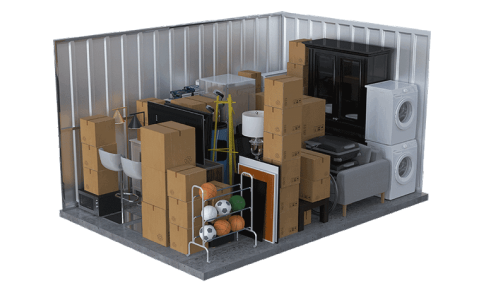
 May 01, 2025
May 01, 2025 Packing your items for long-term storage isn’t just about putting things in boxes. It’s about preserving your belongings safely, easily, and in the same condition as when you stored them. Whether you’re storing seasonal items, moving away for some time, or preserving family heirlooms, proper packing techniques can make a significant difference over the years.
The following step-by-step yet simple long-term storage packing tips show you how to properly protect and organize your stored items.
Before packing anything, clean each item thoroughly. Dirt, dust, and moisture left on items can lead to mold, mildew, or unwanted odors. Wash clothes and let them dry fully, wipe down furniture, and clean kitchenware. Even books and shoes should be dusted off before storage. This step helps prevent pests and reduces the risk of long-term damage.
Choosing the right container depends on what you’re storing. Airtight plastic bins are great for clothes, electronics, and household items. They help keep moisture and pests out. Cardboard boxes are fine for short-term use, but they can break down or attract insects for extended storage. If you do use cardboard, make sure it’s sturdy and dry.
Use acid-free paper and boxes for archival storage of delicate items like photos or artwork. Avoid plastic wrap directly on leather or fabric—it can trap moisture and cause mold.
Environmental conditions significantly affect how your items hold up over time. The best storage space is cool, dry, and dark. Sunlight can fade colors and weaken materials. Fluctuating temperatures can warp wood and crack plastics. High humidity can cause paper and fabric to mold. If possible, store your items in a climate-controlled storage unit.
Stacking and squeezing items to fit more into your storage unit may seem smart initially, but it can cause long-term harm. Store items the way they’re meant to sit. Mattresses should lie flat, not stand on their sides. Furniture should be placed as it would be in a room to prevent warping. Avoid piling heavy items on top of soft or fragile ones.
Place heavy items at the bottom and lighter ones on top when packing boxes. Use soft materials like towels, bubble wrap, or packing paper to fill gaps and prevent items from shifting. Seal each box tightly with tape. The best way to pack boxes for storage is to ensure they’re full but not bulging.
Label each box clearly on the top and one side with its contents and the room to which it belongs. This helps when you need to find something later or move your items again.
Line the floor of your storage space with plastic sheeting or pallets to keep moisture from seeping up. Cover furniture and larger items with a loose cloth or breathable fabric to keep off dust while allowing air to circulate. Avoid wrapping items too tightly—airflow is essential for long-term storage.
Use a layout that lets you access items easily. Don’t block the back wall completely. Leave a small aisle down the center or along one side. Stack boxes safely and avoid very tall piles that could fall over. This simple storage unit packing guide can save you stress if you need to grab something quickly or want to check on your items.
When thinking about how to pack for long-term storage, take your time and be thorough. A little care today can save your belongings for years to come. It’s not about packing fast—it’s about packing right.
For people looking for more helpful packing and storage advice, Lifetime Climate Controlled Storage shares practical tips and reliable insights to keep your possessions safe for the long haul.